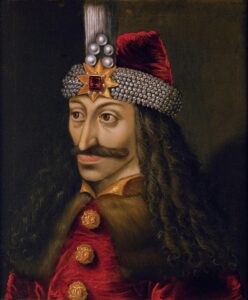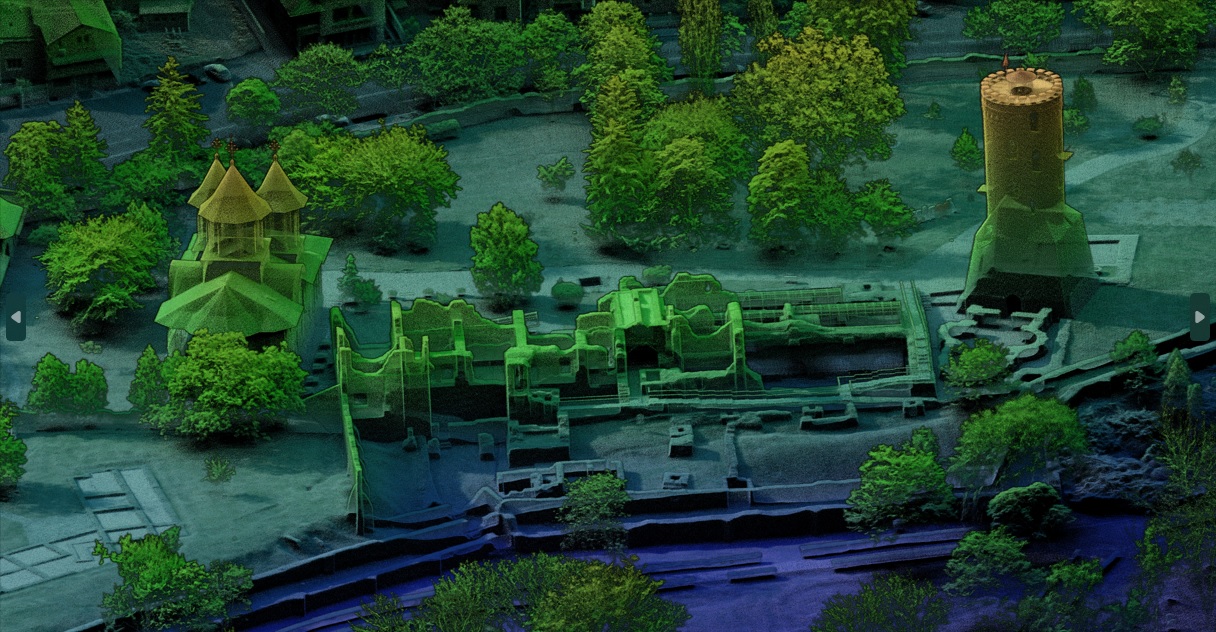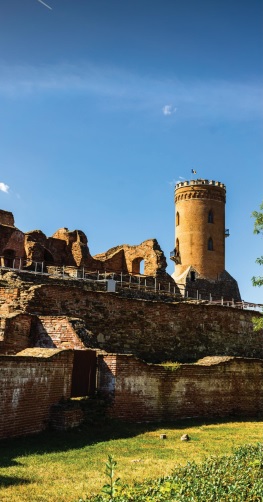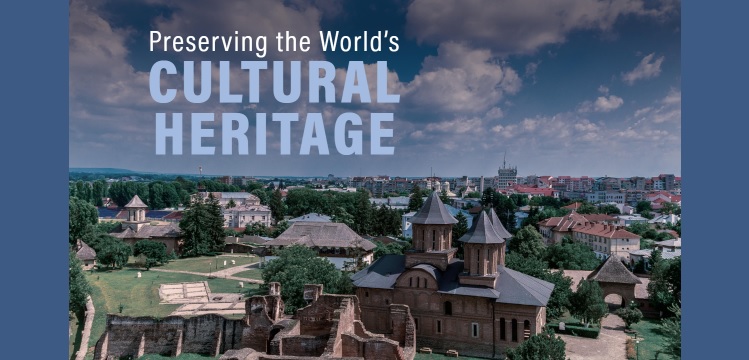Scanning the ruins of a castle in Romania will help preserve the country’s past and the literary myth of Dracula
When the Institutul Național al Patrimoniului (National Institute of Heritage) in Bucharest, Romania, undertook the project to digitally document the nation’s cultural heritage, the starting point was obvious—in Transylvania at Dracula’s Castle.
Of course, Dracula was a fictional character so his Transylvania castle would, therefore, be fictional as well. Or is it? Literary scholars argue that Bram Stoker’s 1897 novel is based on Vlad III, the Voivode (military prince) of Walachia, which is now part of modern Romania. Known as Vlad the Impaler, he was both a national hero of Romania as a vaunted protector of his people and a sadistic and brutal military leader who impaled his enemies—both foreign and domestic—and left them to die on stakes. He was the second son of Vlad Dracul who was ruler of Wallachia in 1436 so Vlad III was known as Dracula—and now you know the connection to Stoker’s bloodthirsty character.

Vlad III, known as Vlad Dracula and Vlad the Impaler
Vlad’s castle and home in Târgovişte, a city in south-central Romania, lies along the Lalomiƫa River, in the Transylvanian Alps, 50 miles northwest of Bucharest. Târgovişte was the capital of feudal Wallachia in the late Middle Ages, when Vlad ruled.
Romania’s National Institute of Heritage connected with Global Digital Heritage, a not-for-profit private research and education organization dedicated to documenting, monitoring, and preserving the world’s cultural and natural heritage.
“In the face of an increasingly hostile world, a global landscape where conflict, natural disaster, climate change, pollution, and industrialization are destroying our shared heritage at an accelerating rate, we provide 3D digital services to document and preserve places and specimens critical to our global heritage,” says Herbert Maschner, president and chief scientist at GDH.
Very much in ruins, the Târgovişte castle was in need of documentation, not only to preserve Romania’s heritage but the world’s literary heritage as well. Literary scholars disagree on Stoker’s muse for Dracula, but it is known the author did extensive research about Wallachia, including seeking out the book The Accounts of Principalities of Wallachia and Moldavia written in 1820 by William Wilkenson.
He also did extensive research in Whitby, the quaint English seaside town on the Yorkshire Coast where Dracula first arrives in England. He came across the story of the Russian ship Dmitry which had run aground five years earlier. It became the Demeter, the vessel that gets Dracula to Whitby before running aground.
Regardless of whether Vlad III, who was known as Vlad Dracula, inspired Stoker or not, the fortress in Târgovişte is a piece of national heritage. Vlad ruled Wallachia three different times between 1448 and his death sometime around 1476.
The project fit perfectly into GDH’s business model. “We emphasize lesser-known heritage in regions that have fewer resources for documentation and conservation. We do this for free. We then return all of the data and results to the host institution or regional/local authorities who can do anything they wish with the materials.”
The data is now in the hands of Complexul Național Muzeal Curtea Domnească Târgoviște.
“The administrator of the monument will use the model for the popularization of the site and will keep the model for the purpose of use for future restorations,” says Marius Streinu of the Institutul Național al Patrimoniului.

A 3D point cloud from a scan of the grounds of a medieval castle in Romania shows the Chindia Tower, the ruins of the castle and the Great Princely Church.
“We, as the National Institute of Heritage, will archive it, we will popularize it through the website and our own media, and we will use it for the design of future restorations. NIH is also using these models to fulfill the 2021 recommendation of the European commission for 3D digitization of monuments and sites at risk.”
With help from Forrest Briggs, chief operations officer at LiDARUSA, the project covered three days at the end of October 2023.
“GDH bought one of our lidar systems just a few months before this project,” says Briggs. “They requested our expertise. It’s difficult to get everything set up when you’re new to the equipment. We agreed to come over and help them. We flew it all and processed it all for them.”
Using LiDAR USA’s Surveyor 32 MAX Briggs flew tight patterns throughout the ruins because GDH wanted the highest detail possible and shadows from crumbled walls cast large, darkened areas.
“Logistically, with Dracula’s castle there were lots of fallen down walls, lots of ruins. If you have shadows you miss a lot of details unless you fly a really detailed grid pattern, which is what I did,” Briggs said.
Briggs spent two-and-a-half days scanning the ruins, castle grounds and garden and then went to the western shore of the Black Sea to scan the Roman ruins at Adamclisi, one of the furthest outposts of the Roman Empire.

The Chindia Tower in the Targoviste Royal Court in Romania was the Medieval home of ruler Vlad Dracula, thought to be the inspiration for Bram Stoker’s character.
The fortress and garden grounds of the castle are about 40 acres. The castle itself is about 78,000 square feet and consists of more than two dozen rooms, including some below the surface. Maschner says the most difficult part of the project was scanning the rook-shaped Chindiei Tower, the most prominent feature of the grounds.
The dual oblique cameras of the Surveyor 32 allowed Briggs to fly in the grid pattern and create a stereo image. “By having two cameras facing opposite angles, you’re able to get imagery that goes all the way down to the bottom of what you’re trying to capture,” he said.
“Our objective was to capture both the exterior and interior components to combine these data into a single 3D model. Maschner says. “The interior of the tower consists of a relatively narrow spiral staircase…and these are particularly tricky to scan and require a great deal of effort and planning.”
Because the castle has many daily visitors, the tower’s interior had to be temporarily closed. “We scanned and captured photogrammetry of the interior in about one hour and 30 minutes. These data were then combined with our exterior tower data, giving us a full 3D documentation of the structure.”
Also on the site is The Great Royal Church Biserica Mare Domnească built in 1584. Briggs and GDH scanned this, as well, in such detail as to digitize centuries old fresco paintings in the walls.
“The frescos of the Great Princely Church are some of the most beautiful that we have scanned,” Maschner says. “Really, the whole project was incredible,” Maschner says. “Having the opportunity to 3D scan a compound of Vlad the Impaler over Halloween was something special.”
Briggs agrees: “We were there on Halloween day in Vlad the Impaler’s castle. You can’t get any more phantasmagorical than that,” Briggs said. “But it wasn’t as creepy as I thought it was going to be.”

